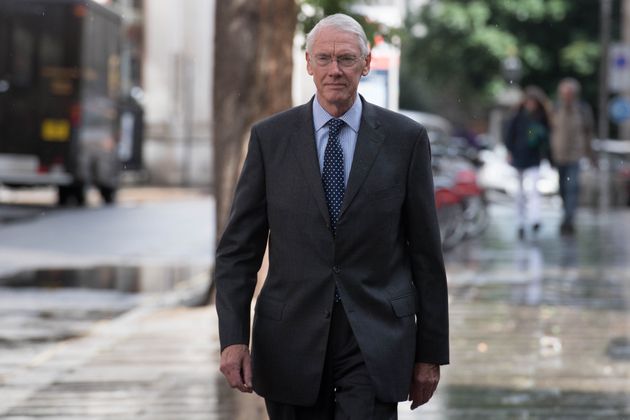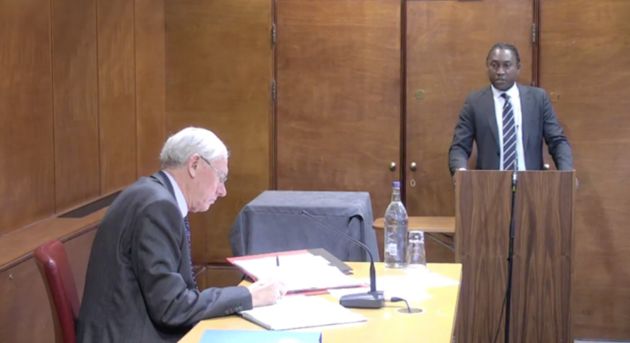The second phase of a public inquiry into the fire at Grenfell Tower will get under way today, hearing submissions from 530 accredited individuals and organisations.
The hearing comes amid continued criticism of the government’s response to the fire that killed 71 people in June last year.
On Tuesday, Kensington and Chelsea Council revealed it had spent nearly £21m on housing displaced survivors – enough to have built the original block an estimated three times over.
A further £8m was spent financially supporting families and individuals, dozens of whom have now spent nine months living in hotels. It is understood the Government will meet approximately half the cost of the hotel bills and financial support.
Out of the 209 households which required new properties in the wake of the fire, 185 have accepted the offer of a temporary or permanent home and 126 have moved in, according to the latest council figures. This leaves 24 families or individuals who are still in hotels.

Since the blaze in June last year, nearly 100 towers and multi-storey apartment blocks in England and Wales have failed fire safety checks, HuffPost reported last month.
Last week, the Metropolitan police revealed that the fire doors installed in the west London tower could only hold back a fire for 15 minutes, half the time they were supposed to.
According to Sky News, a group of forensic architects who specialise in human rights violations have used TV footage, mobile phone data and witness testimony to create an interactive 3D model of Grenfell Tower.
The group has created a “minute-by-minute” account of the fire in an attempt to provide an “unrivalled understanding” of the deadly blaze.
Bob Trafford, one of the researchers from Forensic Architecture, said: “This will be a historical tool, this will be a tool that we hope will be the most complete publicly available record of the circumstances of the night of the fire and it’s a record that will be built from all the publicly available information, information that we hope and that we are asking that the public will share with us.”
WHAT WILL HAPPEN AT THE SECOND HEARING?
The second procedural hearing will take place on Wednesday and Thursday from 10am at The Holborn Bars in Camden.
The hearing, according to the inquiry website, will review the progress of the “first phase of the Inquiry and finalise the timeframe for the evidential hearings”.
The first hearing dealt largely with how survivors and relatives of those who died should be heard and how documents should be disclosed to “core participants”.

From an announcement made on the inquiry website on Tuesday, those most directly impacted by the blaze will get their say when evidence is heard.
The chairman, Sir Martin Moore-Bick, has granted “core participant status” to 532 individuals and organisations. Of those, 504 are bereaved, survivors and local residents; 28 are organisations.
“The Inquiry is keen to ensure the views of all core participants are taken into account when considering the structure and timetable for progressing the Inquiry,” the website notes.
HOW CAN YOU WATCH IT
As occurred during the first hearing, the hearing will be live-streamed via the inquiry website: www.grenfelltowerinquiry.org.uk.
The public can also watch it The Notting Hill Methodist Church, 240 Lancaster Rd, W11 4AH, where the live-stream we be publicly screened both days.
There will be 100 seats available, which will be issued on the day, on a first come, first served basis.
RECAP: WHAT HAPPENED AT THE FIRST HEARING?
The most emotive issue at the first hearing was whether the inquiry chair should be helped by a panel drawn from the local community, and what powers it should have.

The most memorable words were spoken by human rights lawyer Michael Mansfield who called the fire “a national atrocity” shortly after he stood to speak.
“How on Earth, in the 21st century, in one of the richest boroughs of the United Kingdom, can a block like this just go up in flames with so many casualties involved?” he asked.
Read the Seven Key Moments From The First Hearing here.
WHEN DO THE EVIDENTIAL HEARINGS BEGIN?
A date has yet to be set for the first evidential hearings for the inquiry that opened on 14 September 2017.
“The Chairman is in the process of gathering and considering relevant evidence and hopes soon to be able to announce when the first evidential hearings with witnesses will take place,” the inquiry website reads.
However, the website notes, that core participants have been written to asking for feedback ahead of evidential hearings beginning in May, “and in any event no later than 4 June 2018”.
WHAT IS THE INQUIRY LOOKING AT?
The Grenfell Tower Inquiry website says:
“The Grenfell Tower Inquiry will examine the circumstances leading up to and surrounding the fire at Grenfell Tower on 14 June 2017. It will establish the facts and will make recommendations as to the action needed to prevent a similar tragedy happening again.
“The Inquiry is independent. It will be for the Chairman, Sir Martin Moore-Bick, to decide what documents should be produced and who should give evidence.
“Residents of the Tower, others who live in the locality and those who have lost friends and family will be able to take part and the Government has said that funds will be made available, where appropriate, to cover the costs of their legal representation in the Inquiry.”
The Inquiry’s Terms of Reference are:
1) To examine the circumstances surrounding the fire at Grenfell Tower on 14 June 2017, including:
(a) the immediate cause or causes of the fire and the means by which it spread to the whole of the building;
(b) the design and construction of the building and the decisions relating to its modification, refurbishment and management;
(c) the scope and adequacy of building regulations, fire regulations and other legislation, guidance and industry practice relating to the
design, construction, equipping and management of high-rise residential buildings;(d) whether such regulations, legislation, guidance and industry practice were complied with in the case of Grenfell Tower and the fire safety
measures adopted in relation to it;(e) the arrangements made by the local authority or other responsible bodies for receiving and acting upon information either obtained from local residents or available from other sources (including information derived from fires in other buildings) relating to the risk of fire at Grenfell Tower, and the action taken in response to such information;
(f) the fire prevention and fire safety measures in place at Grenfell Tower on 14 June 2017;
(g) the response of the London Fire Brigade to the fire; and
(h) the response of central and local government in the days immediately following the fire;
and
2) To report its findings to the Prime Minister as soon as possible and to make recommendations.